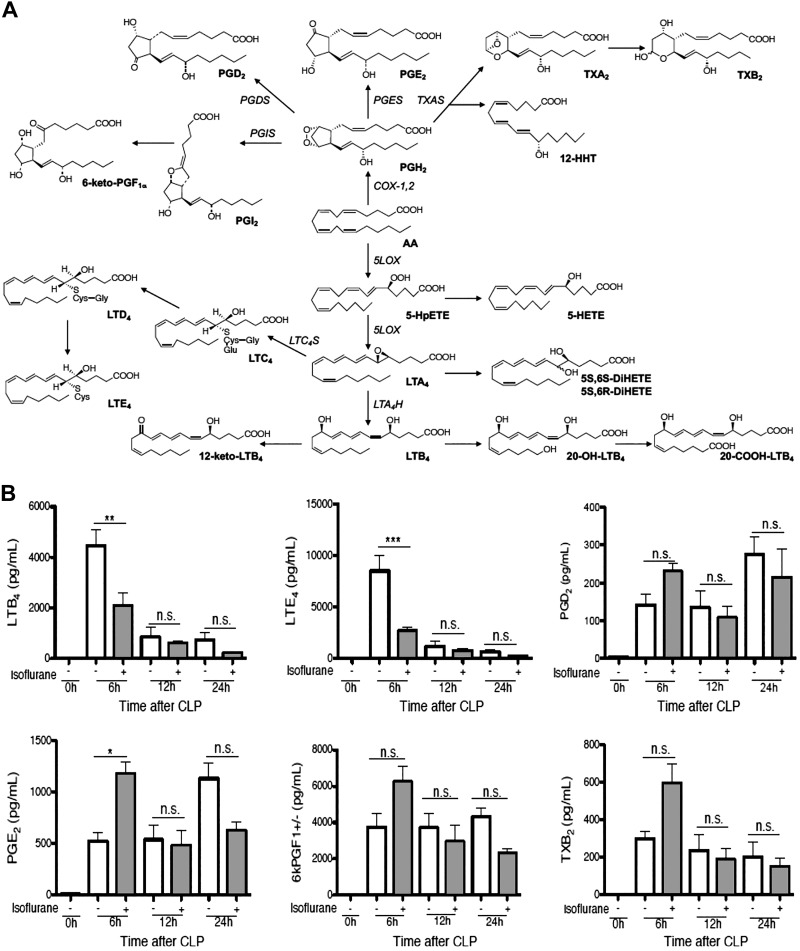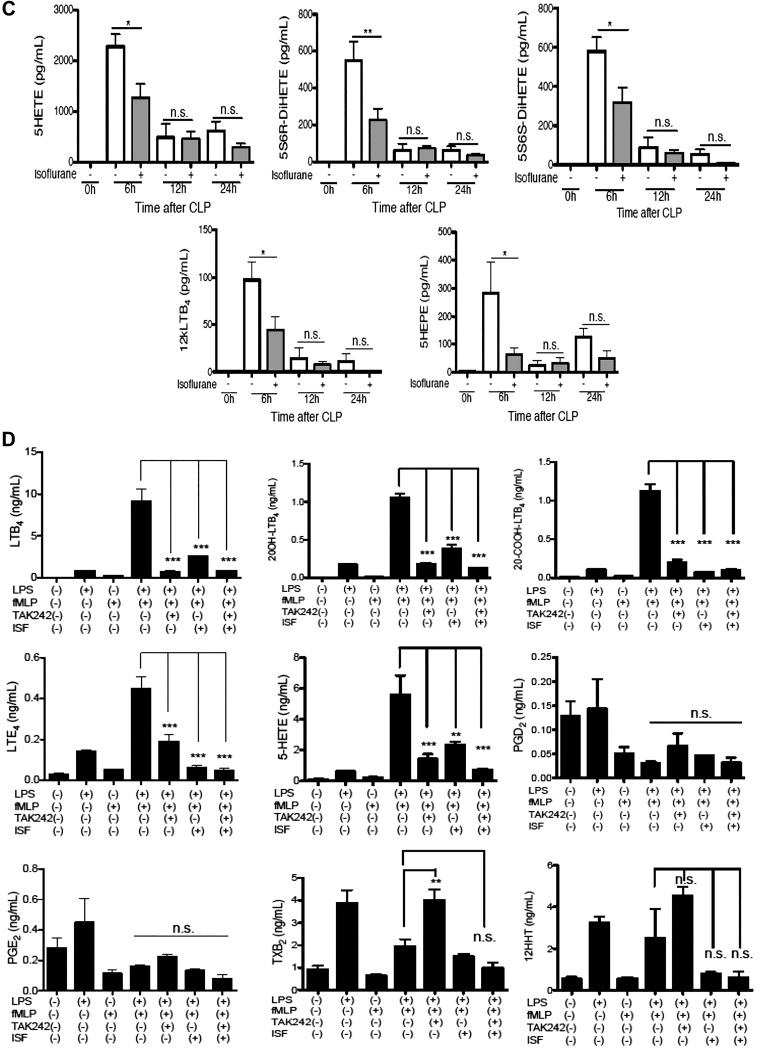Figure 1.
The effect of volatile anesthetic isoflurane on the production of lipid mediators. A) Lipid mediator cascade derived from AAs. B, C). Mice were subjected to CLP surgery under ketamine/xylazine anesthesia, and then a group of mice were exposed to 1% isoflurane for 6 h. Peritoneal lavage fluid was collected at different time points after CLP surgery as indicated in figures. Lipid mediators originated from AAs were measured. Data were shown as means ± sd of 4 mice at each time point; n.s., not significant. Statistical analysis was performed using 1-way ANOVA with Bonferroni post hoc analysis. *P < 0.05, **P < 0.01, ***P < 0.001. 5-LOX–mediated lipid mediators were measured. 5-Hydroxyicosapentaenoic acid was a 5-LOX–derived lipid mediator from eicosapentaenoic acid. Other lipid mediators were 5-LOX derived from AAs. Data were shown as means ± sd of 4 mice at each time point; n.s., not significant. Statistical analysis was performed using 1-way ANOVA with Bonferroni post hoc analysis. *P < 0.05, **P < 0.01, ***P < 0.001 D). The role of LPS priming in the production of AA-derived lipid mediators was examined. Whole blood was primed with LPS (1 µg/ml) and stimulated with fMLP (0.1 µM). As a TLR4 inhibitor, TAK-242 (1 µM) was used. Isoflurane (ISF, 1%) was exposed to a group of samples. Data were shown as means ± sd of quadruplicates; n.s., not significant. Statistical analysis was performed using 1-way ANOVA with Bonferroni post hoc analysis. **P < 0.01, ***P < 0.001.


